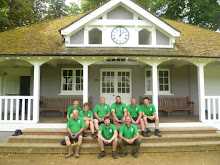 |
| First Egg Laid |
The swans have been building their nest for the last 10 days and today the first egg was laid sometime between 7:45am and 13:15pm, the nest was checked at these times by Ali. Mating has been seen twice, the first time on the 10th March and the second time on Friday, 18th. This first egg has been laid just over 3 weeks earlier than last year, see blog entry 16th April 2015
'Swans (First Egg 2015)' and a week earlier than 2014, see blog entry 27th March 2014
'The First Egg Laid (2014)'. The egg laying this year and the previous two are all considerably earlier than 2013's start date, 3rd May! Once all the eggs have been laid the incubation will begin.
 |
| Female Goosander |
The annual arrival of the Goosander to the lake saw the first recorded sighting on the 4th January, a female and for the next two months a further 12 birds were seen, this years dates are as follows:
4th January - 1 female
27th January - 1 male/1 female (Pair)
29th January - 3 male/1 female
8th February - 1 male/1female (Pair)
9th Febraury - 1 female
4th March - 1 male/1 female (Pair)
9-11th March - 1 female
For previous years recorded sightings see blog entry 26th February 2015
'Goosanders, Just Passing Through'.
 |
| The Canada Geese Return |
Last year a pair of Canada Geese successfully reared two young and, as expected, four geese returned on the 1st March. Since their arrival, having stayed a while, two have now flown off and left, what is thought to be, the adult pair from last year having returned to the favourite breeding ground. For last year's story see blog entry 24th June
'The Success And Failures Of The College Waterfowl'.
Away from the water and the waterfowl, the Blue Tit have started to check out the old hollow apple tree in the orchard, possibly the same pair that used it successfully last year, see blog entry 2nd June 2015
'Great Tit V Blue Tit'.







































